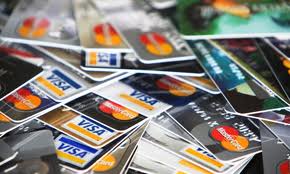The difference between “debit” and “credit.” Debit means “subtract.” When you use a debit card, you are subtracting your money from your own bank account. Debit cards allow you to spend only what is in your bank account. It is a quick transaction between the merchant and your personal bank account.
Credit is money made available to you by a bank or other financial institution, like a loan. The amount the issuer allows you to use is determined by your credit history, income, debts, and ability to pay. You may use the credit with the understanding that you will repay the amount, plus interest if you do not pay in full each month. You will receive a monthly statement detailing your charges and payment requirements.
What is a debit card?
A debit card, or check card is an ATM card plus. It can do all an ATM card can do and more. It looks like a credit card, and can be used as an ATM card, but can also be used to buys things anywhere credit cards are accepted. The amount you can spend is limited by the amount in your bank account. When you use it to buy something, the store contacts your bank electronically and automatically deducts the purchase amount from your account. Debit cards are accepted everywhere that credit cards are accepted, which makes them much more convenient than regular ATM cards.
Depending on the type of debit card you have and the store you’re in, you make a purchase with your debit card “on-line” by either punching in your Personal Identification Number (PIN), or password, on a keypad, or “off-line” by signing a receipt as you would with credit card purchases. If the purchase resembles a credit card transaction, your account usually is debited within two to three days, rather than immediately.
Credit Cards
If you carry a balance, credit cards can be like very expensive loans made by banks, gasoline companies and department stores. The credit card issuer gives you a card. You use the card to pay for items and services up to a certain total amount — your credit “limit.” The store merchant or service provider collects what you owe from the card issuer, whom you repay. You’re allowed to pay off what you owe little by little each month, as long as you pay a minimum amount each time. You’re charged interest on the balance you owe (as high as 26% each year) at the end of each period, unless you pay the full balance each time your bill arrives.
Credit cards yield high profits to their issuers for several reasons. The most important is the high rate of interest — interest on credit cards alone accounts for the bulk of the profits earned by banks that issue credit cards. Also, many companies charge an annual fee for issuing a credit card, and most companies charge late fees, over-the-limit fees and other miscellaneous charges. Finally, the companies profit by charging merchants and service providers a fee each time a customer uses the company’s credit card in the merchant’s establishment.
Charge Cards
Charge cards, also called travel and entertainment cards, are a little different from credit cards. Charge cards, such as American Express and Diners Club, have no credit limit. You can usually charge as much as you want, but you are required to pay off your entire balance when your bill arrives, with one exception. If you charge air fare, cruise fees or hotel fees for a hotel room booked through a travel agent on an American Express card, you can pay off your balance over 36 months. You’ll be charged between 19% and 21% interest and will have to make minimum monthly payments of $20, or 1/36 of your balance, whichever is greater.
Charge card companies make their profits by charging very high annual fees — up to $100 — and by charging merchants relatively high fees each time a customer pays using the company’s charge card.
If you don’t pay your charge card bill in full (unless the charges are travel expenses on an American Express card), you’ll get a one-month grace period, when no interest is charged. After that, you’ll be charged interest that averages about 18%. If you don’t pay after about three months, your account will be closed and your bill sent to the collections department.
Cash Advances
Many people use their credit or charge cards to obtain cash advances. Cash advances are generally more expensive than standard credit card charges. Most banks charge a transaction fee up to 4% for taking a cash advance. They also charge interest from the date the cash advance is posted, even if you pay it back in full when your bill comes. Finally, the interest rate is often higher on cash advances than it is on ordinary credit card charges.
ATM Cards
ATM cards are issued by banks, essentially to give bank customers flexibility in their banking hours. In most areas, with an ATM card you can withdraw money, make deposits, transfer money between accounts, find out your balance, get a cash advance and even make loan payments at all hours of the day or night.
Debit cards are also known as check cards. Debit cards look like credit cards or ATM (automated teller machine) cards, but operate like cash or a personal check. Debit cards are different from credit cards. While a credit card is a way to “pay later,” a debit card is a way to “pay now.” When you use a debit card, your money is quickly deducted from your checking or savings account.
Debit cards are accepted at many locations, including grocery stores, retail stores, gasoline stations, and restaurants. You can use your card anywhere merchants display your card’s brand name or logo. They offer an alternative to carrying a checkbook or cash.
















